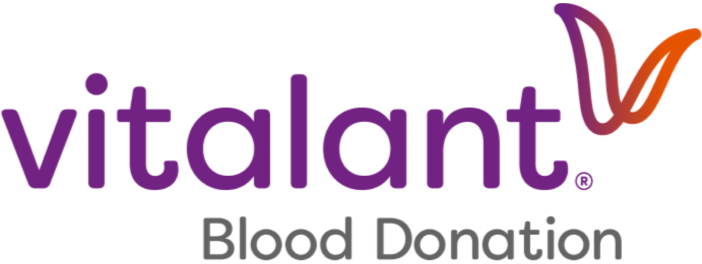If you’ve ever donated blood — or tried to — you might have heard your hemoglobin level mentioned during your screening.
It’s one of the key indicators we check to ensure donating is safe for you and beneficial for the patient who will receive your blood. But what exactly is hemoglobin, and how does iron figure into the importance of blood donation? Let’s break it down.
What Is Hemoglobin, and Why Is It Important?
Hemoglobin is a protein in your red blood cells that carries oxygen from your lungs to the rest of your body. It’s what gives blood its red color — and its lifesaving power. Hemoglobin relies on iron, an essential mineral, to function properly.
At every donation, Vitalant performs a quick finger stick test to measure your hemoglobin level. This helps ensure that you have enough red blood cells to safely donate and recover well.
To be eligible to donate, your hemoglobin level needs to be at least:
- 12.5 grams per deciliter for women
- 13.0 grams per deciliter for men
If your level is below that, you’ll be temporarily deferred. It’s a common occurrence and nothing to worry about. It just means your body needs time (and a little help from nutrition) to rebuild.
Why Might You Be Deferred?
Low hemoglobin can be caused by a variety of factors:
- Not enough iron in your diet
- Frequent donations
- Menstrual blood loss
- Poor iron absorption due to certain conditions or medications
If you’re deferred, it doesn’t necessarily mean you can never donate again — it just means you need to build your levels back up. Our friendly, trained staff will let you know how long to wait before trying again. (Usually only a few weeks.)
Boosting Your Iron Levels: What to Eat
One of the best ways to support healthy hemoglobin levels is to eat a diet rich in iron. There are two tpers of iron:
- Heme iron, found in animal sources like red meat, chicken and fish, is absorbed more easily by the body.
- Non-heme iron, found in plant-based sources like spinach, lentils, and fortified cereals, is still beneficial but absorbed at a lower rate.
Pairing non-heme iron sources with vitamin C-rich foods (such as oranges, strawberries, tomatoes or bell peppers) can improve absorption significantly. Here are some iron-rich foods you can enjoy:
- Lean red meat
- Turkey or chicken
- Salmon or tuna
- Beans and lentils
- Dark leafy greens
- Fortified cereals or breads
- Cooked beans
- Tofu
- Wheat germ
- Cooked enriched egg noodles
- Dried apricots
- Pumpkin, sesame or squash seeds
Fuel Your Body Right (Without Going Full Buffet Mode)
Eating “well” doesn’t mean piling your plate sky-high — it means choosing the right foods to support healthy iron levels. Focus on meals that are low in fat but high in heme iron, like grilled chicken breast, lean beef or even some surprisingly iron-rich seafood (hello, oysters and sardines!). Eggs are a bit of an overachiever, offering both types of iron (heme and nonheme), and there’s a whole pantry of other great options, from beans and leafy greens to iron-fortified cereals. Aim for balance, variety and maybe go easy on that all-you-can-eat buffet.
What if You Have Too Much Iron?
Most people don’t get too much iron from food alone. However, if you take supplements or have a medical condition like hemochromatosis (a disorder that causes your body to absorb too much iron), speak with your doctor before donating. And here’s an interesting fact: In some cases, regular blood donation is actually used as part of the treatment for this condition!
Take Care of Your Iron Health, Too
When your iron and hemoglobin levels are healthy, your donation has maximum impact. Whether you’re donating whole blood or giving a Power Red donation (which collects more red cells), maintaining good iron levels ensures you’re ready to answer the call when patients need you most.
The Importance of Regular Donations
Donating blood regularly is one of the most meaningful ways to support patients in need — but it starts with taking care of yourself. When you eat a healthy, iron-rich diet and maintain strong hemoglobin levels, you’re more likely to be eligible to donate each time you try. That consistency helps ensure blood is available for patients facing surgeries, traumas, and chronic conditions. By making your own wellness a priority, you not only feel better—you make it possible to help save more lives, more often.
Remember that a healthy donor saves more lives. So eat well, feel great and be the reason someone gets a second chance. Schedule your appointment today.

